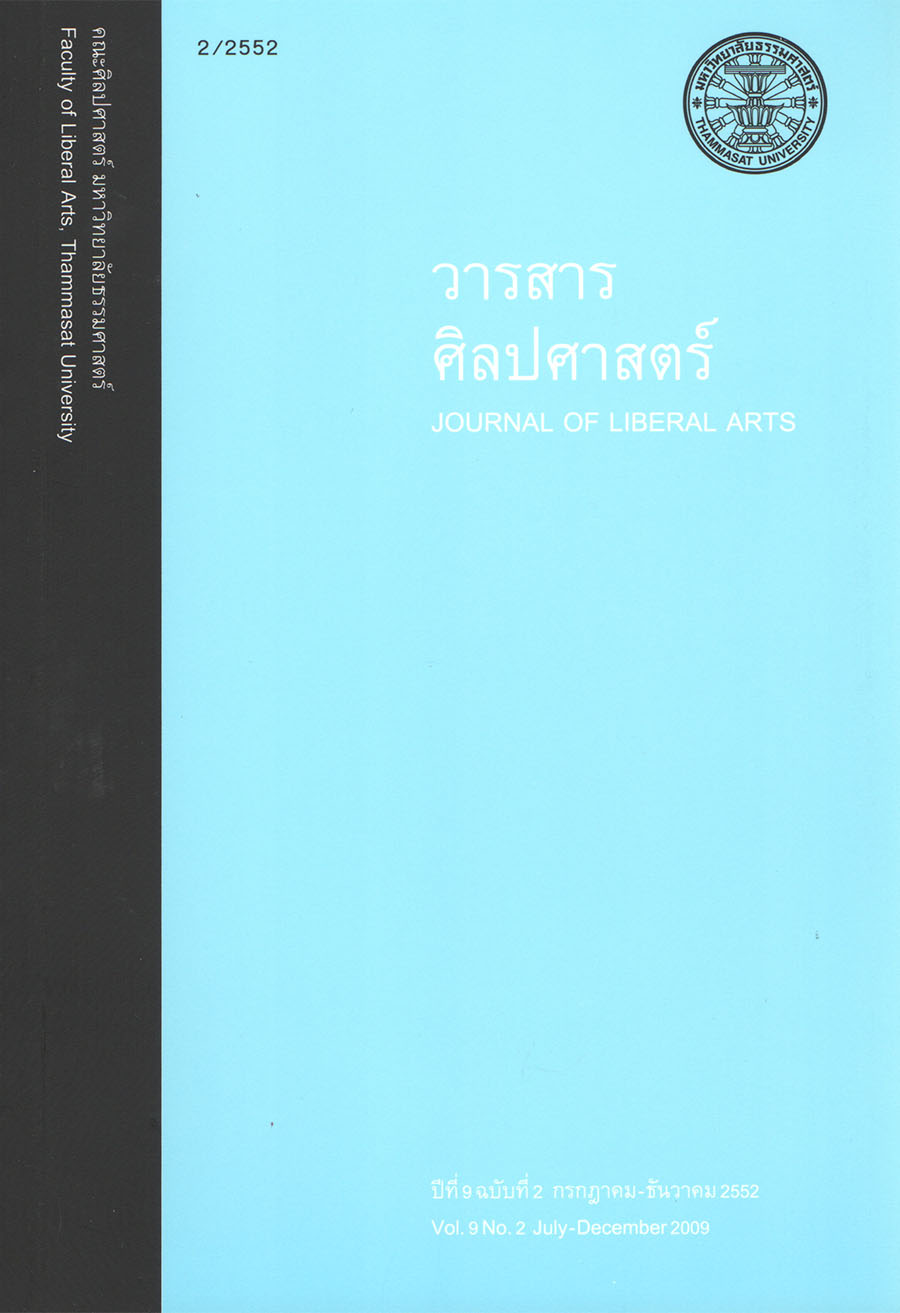บทสำรวจภูมิศาสตร์การเมืองในยุคหลังสงครามโลกครั้งที่ 2
Main Article Content
บทคัดย่อ
หลังสงครามโลกครั้งที่ 2 เป็นต้นมา ความสนใจของนักภูมิศาสตร์และนักสังคมศาสตร์อื่น ๆ โดยเฉพาะนักรัฐศาสตร์ ตลอดจนการเปลี่ยนแปลงทางสังคมและการเมืองก่อให้เกิดการพัฒนาเนื้อหาของภูมิศาสตร์การเมืองอย่างต่อเนื่อง และกลายเป็นแบบฉบับของภูมิศาสตร์การเมืองทั่วโลก โดยสามารถจำแนกความสนใจและพัฒนาการของนักภูมิศาสตร์ได้เป็น 2 ช่วงเวลาตามปรากฎการณ์ที่สำคัญทางการเมือง ได้แก่ เนื้อหาทางด้านภูมิศาสตร์การเมืองในช่วง 45 ปี (ค.ศ. 1945 - 1990) นับตั้งแต่สิ้นสุดสงครามโลกครั้งที่ 2 จนกระทั่งการล่มสลายของประเทศสหภาพโซเวียต และในช่วงภูมิศาสตร์การเมืองหลังการล่มสลายของประเทศสหภาพโซเวียตและการเกิดขึ้นของสหภาพยุโรป นอกจากนี้ยังสามารถจำแนกได้เป็น 6 ช่วงเวลาย่อย ได้แก่ (1) ช่วงของภูมิภาคศึกษา และความสนใจในปัจจัยทางภูมิศาสตร์ที่มีผลต่อสภาพแวดล้อมทางการเมือง (ค.ศ. 1945 - ค.ศ. 1960) (2) ช่วงของการลดลงของเนื้อหาภูมิภาคศึกษา การดำรงอยู่ของความสนใจในปัจจัยทางภูมิศาสตร์ การเริ่มต้น และการปรากฏตัวของวิธีการเชิงการหน้าที่ (Functional Approach) พฤติกรรมทางภูมิศาสตร์การเมืองและภูมิศาสตร์การเลือกตั้ง (ค.ศ. 1961 - ค.ศ. 1970) (3) ช่วงของภูมิศาสตร์การเมืองสมัยใหม่ เอเชียศึกษา ความมั่นคงของภูมิศาสตร์การเลือกตั้ง และการลดระดับการวิเคราะห์จากภูมิภาคสู่ระดับท้องถิ่น และบุคคล (ค.ศ. 1971 - ค.ศ. 1980) (4) ช่วงภูมิศาสตร์การเมืองเชิงพฤติกรรม ภูมิศาสตร์การเมืองเชิงสังคม และการเริ่มขึ้นของเศรษฐศาสตร์การเมือง (ค.ศ. 1981 - ค.ศ. 1990) (5) ช่วงของความหลากหลายเชิงเนื้อหาของภูมิศาสตร์การเมือง (ภูมิทัศน์ชายแดน อัตลักษณ์ทางเชื้อชาติ ประวัติศาสตร์ ภูมิศาสตร์การเมือง และเศรษฐศาสตร์การเมือง (ค.ศ. 1991 - ค.ศ. 2000) และ (6) ช่วงการไร้ซึ่งพรมแดนในยุโรป ภูมิศาสตร์แนวสตรีนิยม และสังคมศาสตร์ การเมืองกับทรัพยากรธรรมชาติ (ค.ศ. 2001 เป็นต้นไป)
After World War II, the interests of geographers and social workers as well as social and political changes had led to continual development in the contents of political geography and led to new models of political geography throughout the world. This development may be divided into two phases following two political phenomena which provided the contexts for political geography: first, 1945 to 1990 (from the end of the World War II until the end of Soviet Union) and second, 1990 to present (after the end of Soviet Union). We may further divide these into six sub phases: (1) the phase of regional studies and interest in the influence of geographic factors on the political environment (1945-1960); (2) the phase of the diminishing of regional studies, the continual interest in geographic factors, the beginning and the emergence of the functional approach, political behavior geography, and electoral geography (1961 - 1970); (3) the phase of modern political geography, Asia studies, the stability of electoral geography and a focus of analysis on regional levels down to local and personal levels (1971 - 1980); (4) the phase of political behavior geography, political-social geography, and the beginning of political-economic geography (1981-1990); (5) the phase of the varied contents of political geography such as border landscape, racial identity, political history and political economy (1991-2000); and (6) the phase of a borderless Europe, feminist geography, and a focus on social sciences, politics and natural resources (2001 henceforth).


